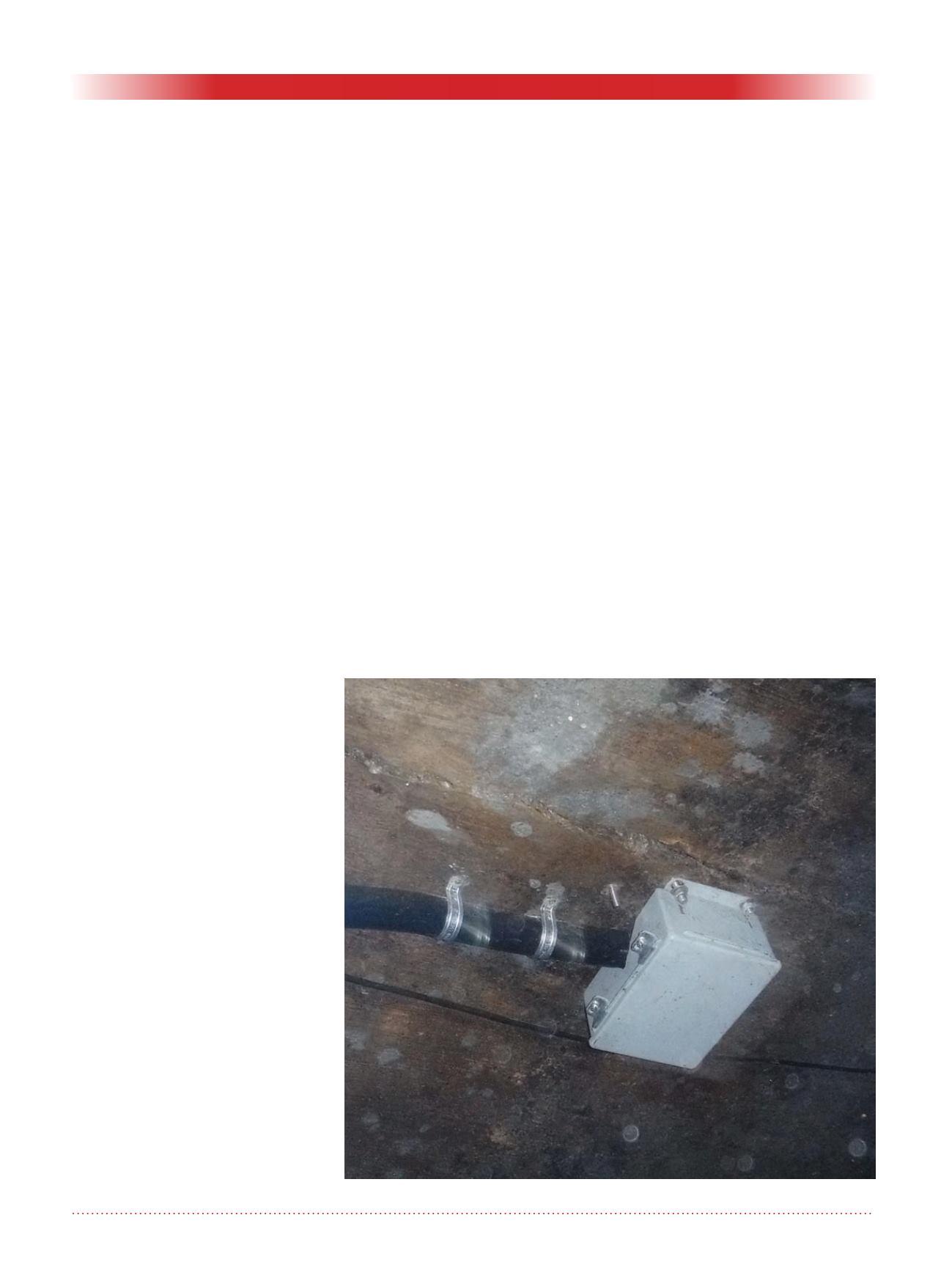
24
Geotechnical News • June 2016
GEOTECHNICAL INSTRUMENTATION NEWS
where engineers can access it. This
is achieved by hooking up a cellular
modem to the logger and setting up
scheduled data transfers. This passive
method of data retrieval is well-suited
for this application since we were
confident that the generated vibration
from tunnel construction would never
exceed the threshold, thus eliminating
the need for real-time alarms.
Lessons learned
Despite a smooth start, unforeseen
equipment failures forced us to
quickly review our setups and devise
an action plant to ensure as little data
as possible would be lost. Of the
failures, the most common one was
unreliable cellular modem communi-
cations. The modems would hang and
generate issues in the transferred data,
and create doubts regarding system
reliability. There was a very real risk
that tunnel construction would go on
without our system continuously pro-
viding evidence that bylaws and other
requirements were being followed. In
this context, a well-prepared contin-
gency plan is a necessity to ensure full
protection for the client.
Beyond these hiccups, the main lesson
learned from this project is not about
choice of instruments, installation
or data analysis. The main challenge
proved to be communicating effi-
ciently with the client. On several
occasions, we have gone over with the
client how the system works, how to
configure it and how to extract data.
Despite offering training sessions and
providing several training documents,
the client still had difficulty maintain-
ing and using the vibration monitoring
equipment.
There was a fairly high turnover rate
for the people in charge of this equip-
ment, and information would be lost
from person to the next. Compounding
this issue, the people in charge have
often been temporary student workers,
which almost guarantees their contract
ends before their successor is hired
and thus that they had not passed on
their knowledge correctly before leav-
ing. In the context of ensuring compli-
ance to the project requirements, it is
necessary to plan with the client how
knowledge will be transferred from us
to them and maintained within their
team.
In short, the general outline of vibra-
tion monitoring was followed: vibra-
tion sources and limits were identified;
instruments and measurement loca-
tions were chosen accordingly; and
the system was set up according to the
requirements. The main lesson drawn
from this project is that for the system
to work as intended, communica-
tion with the client and technological
transfer are almost as, if not more,
important than the technical aspects of
the system.
Project 2
Technical requirements
Large cracks running along several
hundred meters in a large wastewater
sewer compromised security during
infrastructure work in the vicinity of
the tunnel. A collapse of the sewer
could lead to flooding with wastewa-
ter in a very densely populated area.
Given the length and the width of the
cracks (over 5 cm), very stringent
vibration criteria were set: vibration
should never exceed 2 mm/s for low
frequency. Similarly, cracks should not
open or close at all during infrastruc-
ture work in the vicinity. In conse-
quence, two main types of instruments
were used: 12.5 mm-range vibrating-
wire crackmeters and geophones.
In both cases, data are retrieved in a
trailer where an engineer continuously
monitors vibration and crack defor-
mation. The vibration dataloggers
are linked to a cellular modem which
can transfer data to a server. Special
software monitors incoming data and
sends out alarm e-mails as needed.
In most projects an alarm e-mail sent
out within 15 minutes of vibration
exceeding the threshold is considered
satisfactory. The major public safety
risk that a collapse would cause made
Figure 2. A geophone installed in a wastewater tunnel.


